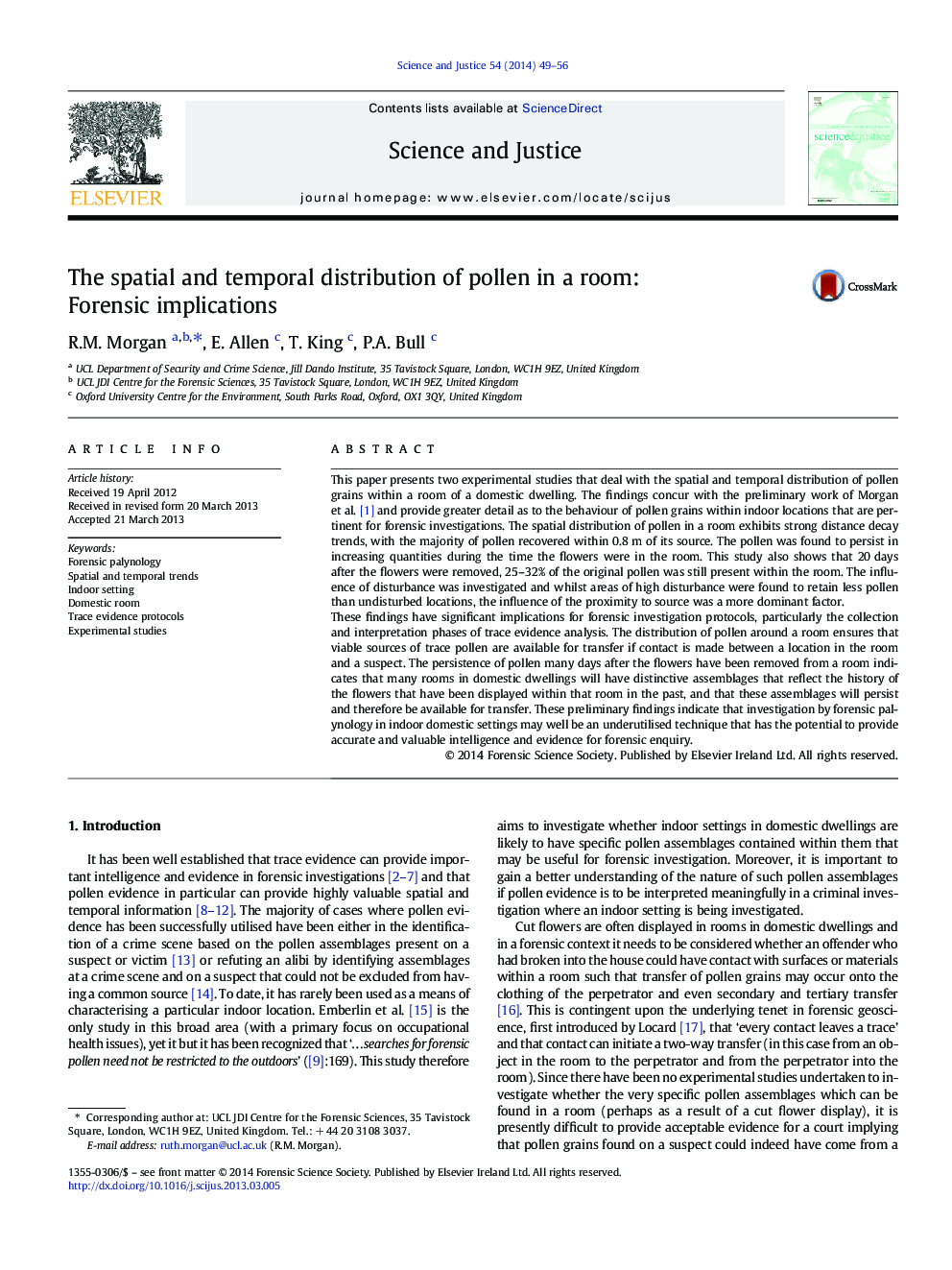| Article ID | Journal | Published Year | Pages | File Type |
|---|---|---|---|---|
| 10255566 | Science & Justice | 2014 | 8 Pages |
Abstract
These findings have significant implications for forensic investigation protocols, particularly the collection and interpretation phases of trace evidence analysis. The distribution of pollen around a room ensures that viable sources of trace pollen are available for transfer if contact is made between a location in the room and a suspect. The persistence of pollen many days after the flowers have been removed from a room indicates that many rooms in domestic dwellings will have distinctive assemblages that reflect the history of the flowers that have been displayed within that room in the past, and that these assemblages will persist and therefore be available for transfer. These preliminary findings indicate that investigation by forensic palynology in indoor domestic settings may well be an underutilised technique that has the potential to provide accurate and valuable intelligence and evidence for forensic enquiry.
Related Topics
Physical Sciences and Engineering
Chemistry
Analytical Chemistry
Authors
R.M. Morgan, E. Allen, T. King, P.A. Bull,
